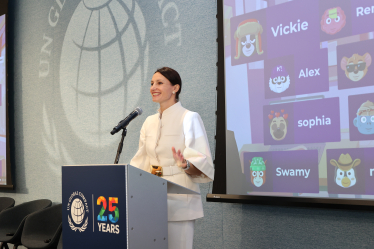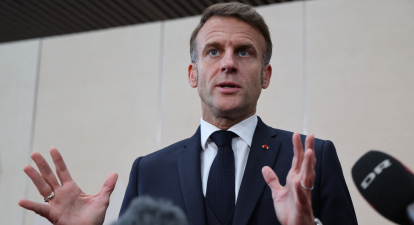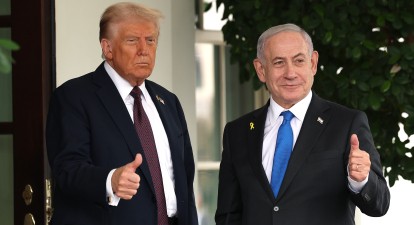
There is resistance within Benjamin Netanyahu's coalition to any agreement with Hamas, but Donald Trump still reached a ceasefire agreement between Israel and Hamas. Photo Getty Images
The Gaza truce was the first breakthrough in the agreements between Israel and Hamas, but peace is still a long way off. Despite the withdrawal of troops and the release of the first hostages, the agreement opened not only the way for humanitarian aid, but also a number of questions: who will control Gaza, who will pay for its reconstruction and whether the US can keep the parties from a new outbreak of violence. The main ones are from materials by Bloomberg, Reuters and FT.
Buy an annual subscription to six Forbes Ukraine magazines for the price of four issues. If you value the quality, depth, and power of real-world experience, this subscription is for you.
After a two-year war that began with a Hamas attack on October 7, 2023, the Israeli government approved the first phase of a ceasefire and hostage exchange agreement brokered by the United States.
Despite sporadic shelling, Israeli forces are withdrawing from parts of Gaza, retaining control of more than half of the enclave. The first phase includes the release of 48 Israeli hostages in exchange for about 2,000 Palestinian prisoners, the FT reports, including 250 lifers.

Popular Category Ratings Date Yesterday Top 30 Employers for Veterans 2025
The US, Egypt, Qatar and Turkey have acted as mediators, and Washington has announced the deployment of 200 troops on a stabilization mission outside the Strip. The ceasefire has seen widespread destruction in the cities of Rafah and Khan Yunis, overcrowded humanitarian zones and food shortages.
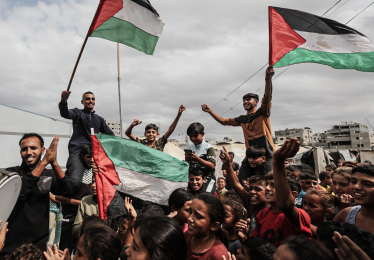
Palestinians gather in the Nuseirat refugee camp to celebrate the announcement of a ceasefire agreement in Gaza, October 9, 2025. Photo by Getty Images
New challenges to the ceasefire
The current ceasefire is just the first step in Donald Trump's multi-layered, 20-step plan to turn a temporary pause into a lasting peace. Further steps include the disarmament of Hamas, the deployment of an international stabilization force and the gradual withdrawal of Israeli troops from the sector, but these points have not yet been agreed. Prime Minister Benjamin Netanyahu, according to the FT, has agreed only to an exchange of hostages and prisoners, while the issues of disarmament, the administration of Gaza and the political future of the Palestinian territories remain open.
The decisive factor will be the participation of the United States and its allies. The main burden will fall on financing reconstruction: according to the World Bank, the restoration of the destroyed territories could cost about $53 billion, and Israel still blocks a significant part of tax revenues, which are the main source of financing for the Palestinian Authority, writes Bloomberg.
The second critical challenge will be the governance of Gaza after the war. Trump's plan does not specify who should control the territory after Israel's withdrawal: the Palestinian Authority, an international administration or a new structure without Hamas participation. It is this uncertainty that is the main political slow-motion mine. Without an agreed-upon governance and security mechanism, even a short-term truce could quickly collapse, analysts say, Bloomberg adds.
The instability of peace
The risks are also growing due to the internal dynamics of Israeli politics. Within Netanyahu's coalition, there is opposition to any agreement with Hamas. Some government officials consider the agreement a concession to terrorists, and the prime minister himself is under pressure from both international allies and the right-wing electorate, writes Reuters. Against this background, any escalation or attempt by Hamas to restore combat capability could become a pretext for Israel to return to active hostilities.
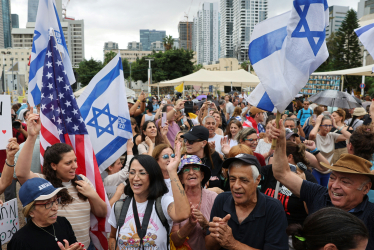
The ceasefire between Israel and Hamas is celebrated in Hostage Square in Tel Aviv. Photo: Getty Images
The humanitarian situation remains another factor in instability. Almost all of Gaza's 2.2 million residents are now displaced, with hundreds of thousands living in camps without adequate access to food, water, medicine or electricity, Bloomberg adds. Any delays in aid deliveries or new restrictions by Israel could spark an explosion of social tensions and a new round of violence.
“The question now is whether this will be just a pause in the fighting or a full ceasefire,” Muain Rabbani, a senior fellow at the non-governmental Council on Middle East Affairs, told Bloomberg. “If it is a ceasefire, will it be used to address the political causes of the conflict, or will we simply return to the situation of October 6, 2023, when all the prerequisites for a new crisis, a new explosion, remain?”
Materials on the topic

Category World Date July 17 Israel launches airstrikes on Damascus. Why is Syria on the brink of another conflict, despite the new government's efforts to stabilize the country? NYT analysis

Category Money Date June 23 Not our war, but painful too. Israeli attack on Iran costs Ukraine $160 million per month, Forbes Ukraine calculated. How it affects the economy

Category World Date June 20 The Middle East is on the brink of full-scale war. Will they be able to Will Israel and Iran Reach Peace? Foreign Affairs Analysis

Category World Date June 14 “A classic example of a spiral of danger.” How a war between Israel and Iran will affect Ukraine. Interview with Igor Semivolos

Category World Date August 09, 2024 Inflicting damage without starting a war. Why aren't Iran and its allies ready for a full-scale conflict with Israel? WSJ analysis

